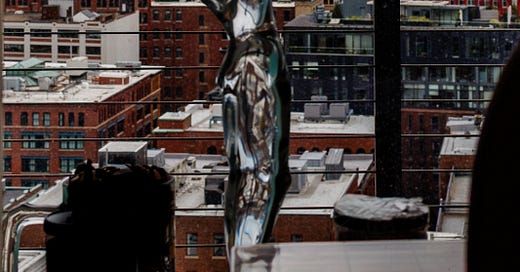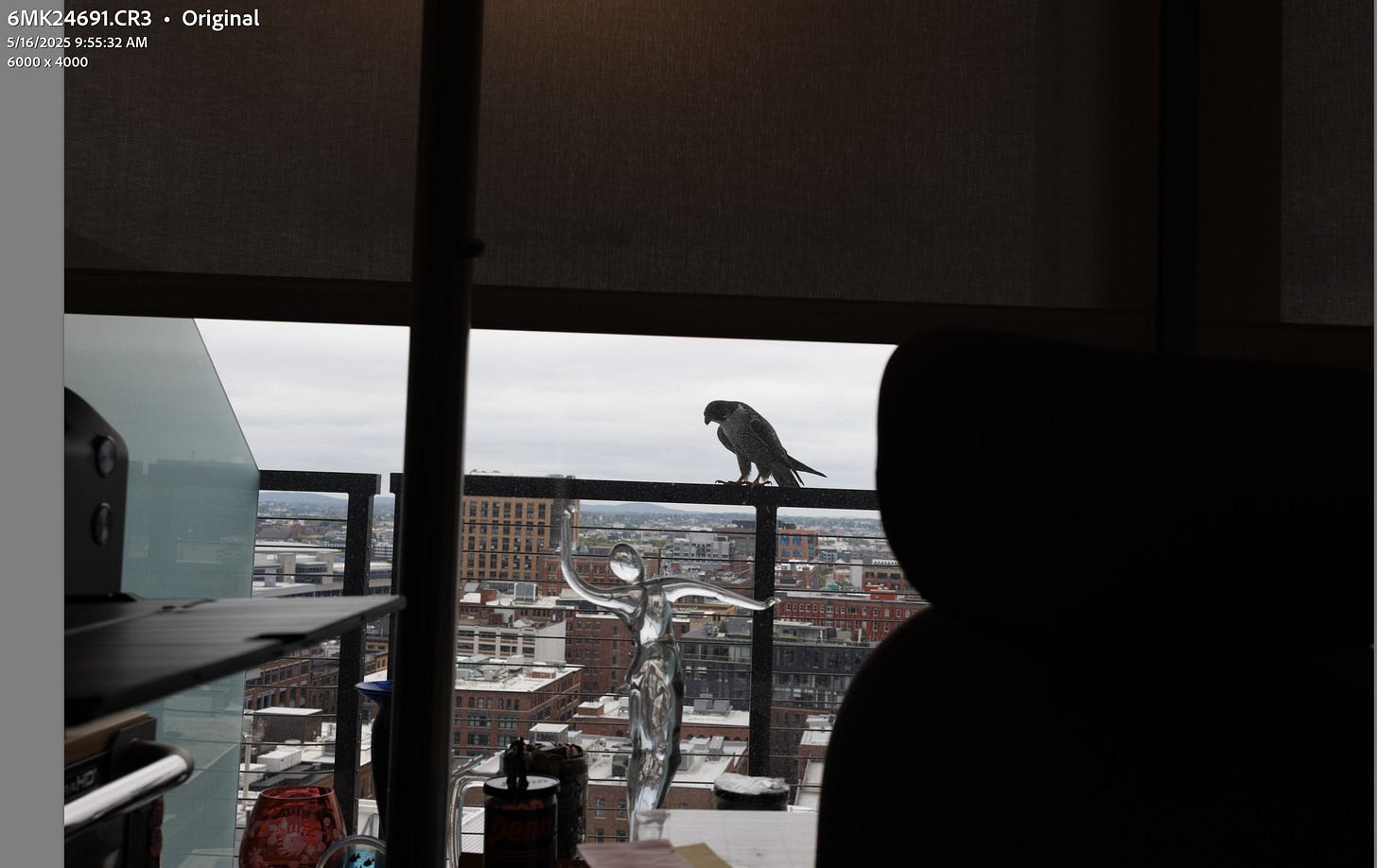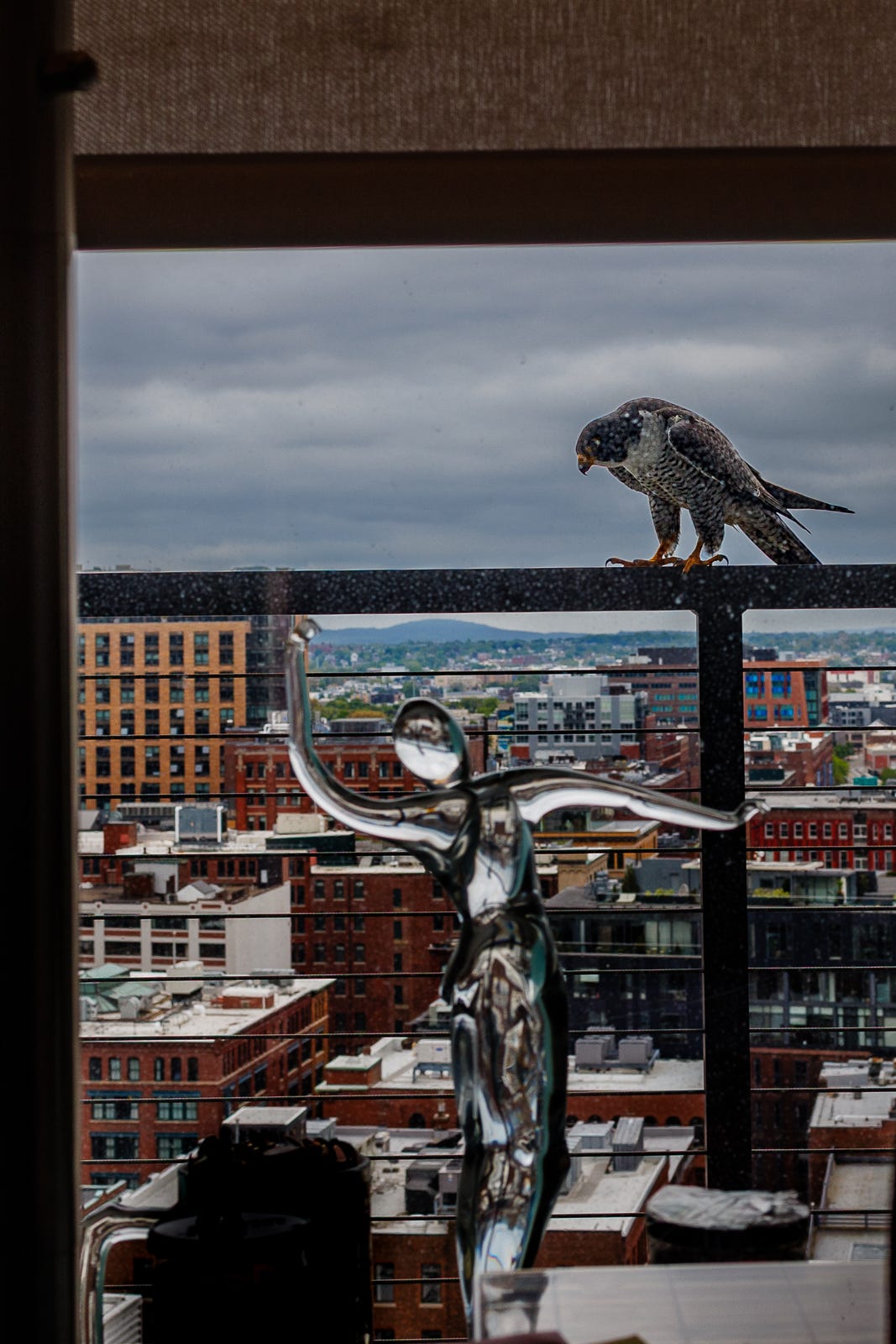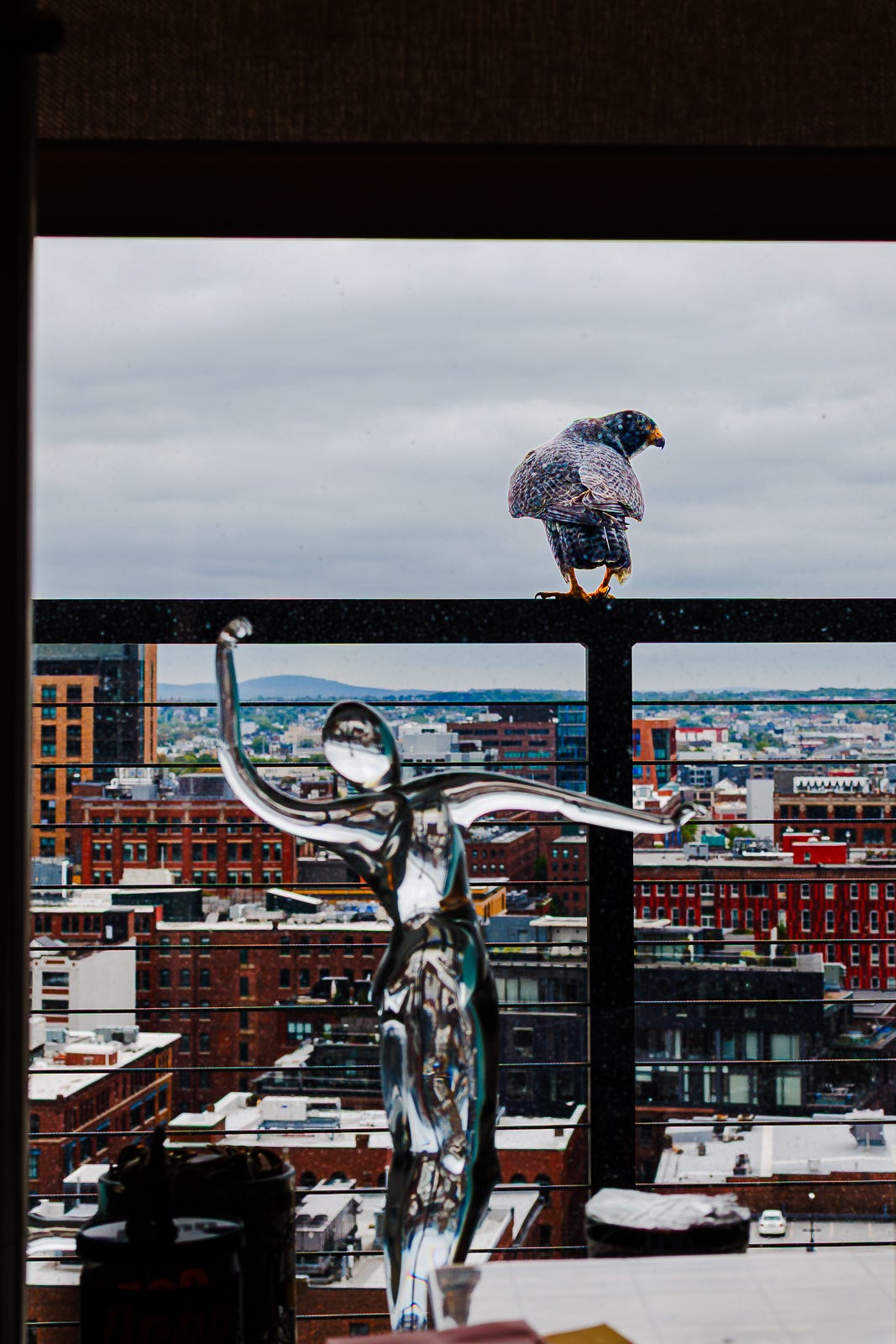Bird of Prey on My Balcony - A Missed Shot 🦅
May 2025. A Real-Life Photo Story from 14 floors up gone sideways turned into an opportunity to reflect, reconnect, and invite your perspective on what matters in the moment.
Preamble: Life and Lens from the Seaport📍
I live in the Seaport District of Boston, MA—right in the heart of this tech-savvy, academically rich New England city. My home office sits on the 14th floor of a 20-story high-rise. A lot of my body of work is captured from this altitude, and I plan to share more of those views soon.
The Story (and a Lesson): A Hawk Visits⚡
So here’s what happened.
I’m in a cast—right leg immobilized up to just below the knee—and can’t exactly leap into action. I’m on a phone call in my home office when, out of nowhere, a hawk lands on my balcony. Just like that. Right in front of me.
The Instincts Kick In🎯
My photographer instincts take over. I interrupt my call. Where’s my camera?
Luckily, it’s sitting in a chair next to me. I grab it. I can’t stand, can’t rush, but I’ve got to get this shot—he’s less than 12 feet away.
I lift the camera, power it on... and realize I’ve got a 35mm prime lens mounted. Great glass, but it’s going to be too wide for a bird this close and small. On top of that, the windows are still dirty from winter storms—south-facing floor-to-ceiling glass. Ugh.
I manage to snap off 15 shots before the hawk flies away. What you’ll see below is a heavily cropped version of one of those shots.
📸 Bird of Prey 1
I couldn’t move to get a better angle. I did what I could. Rolled my chair slightly. That’s all.
If you are not a subscriber and want to see more, consider subscribing.
Conflicting Thoughts 🧠
Using a prime lens means: Work the scene. Move around. Reframe.
But in this moment, I remembered another philosophy:
“Don’t think. If you think, you’ve lost the shot.”
All of this is spinning in my ADHD brain as I sit frozen in my chair—injured, stuck, but determined.
Back to the Shot🔧
As I fiddled with my exposure—shooting into bright backlight—I adjusted 1 stop down to preserve highlights and detail. Just as I got my settings right, the hawk turned away, scanning the city for prey before taking off.
I was buzzing with adrenaline from the encounter. I’d disrupted a business call for a wild, fleeting moment—and yet, I wasn’t happy with my shots.
Lightroom to the Rescue?🛠️
So I turned to Lightroom to see what I could salvage. The images were:
Heavily cropped (from 6000x4000 to around 1900x2850)
Grainy as hell
Dirty from window schmootz (not sensor spots, I promise!)
This was my starting point:
I tried everything: masks, exposure tweaks, sharpening, noise reduction.
Below are two exports:
One with the bird still facing me
Another after he turned away, which had better exposure and less window grime
And then—just like that—the hawk was gone.
What I Learned (and Maybe You Will Too)🔍
Have a Go-To Zoom Lens on Standby
I normally keep the Canon RF 24-70mm f/2.8L lens nearby. It’s sharp, versatile, and lets me go from wide to tight quickly. But I had the 35mm prime mounted for street work—my pre-injury project. With a zoom, I’d have nailed this.Know Your Gear Cold
I didn’t react fast enough with my exposure settings. I had my default aperture set to f/8 for depth of field, but I was facing a bright sky from a dim interior. A faster read on the histogram or light meter might have helped.Don’t Panic
I used to be a scuba diver. Drilled in my head was the adage that panic kills more divers than any problem underwater. So, take a breath, eye to viewfinder, see your readings, and shoot. Avoid Panic at all costs.OPTIONAL - Stop Playing Pickleball ⚠️
No joke. This is my second injury playing. I switched from tennis hoping for less impact—clearly, I miscalculated. I’m out of commission for 2+ months. No Photowalks. No 20,000-step days. Just writing, Lightroom, and rooftop hawks.
Final Thoughts: Fail Fast, Share Anyway📣
Let me say this clearly:
You’re not always going to see my “A” work. Not even my “B” work. …This isn’t a portfolio post—it’s a process post.
In business, I live by “fail fast.” In photography, I’m applying the same.
Not every frame will be great—but every story has value.
I want to hear from you:
Have you had moments like this?
What gear saved—or failed—you?
Have your injuries (or random obstacles) changed your photography?
Do you want to see more of this or less?
Let’s make Image Frontiers more than just me talking. Share your stories. Comment below. Tell me what you’ve learned from your own moments—unexpected, imperfect, and all too real.








